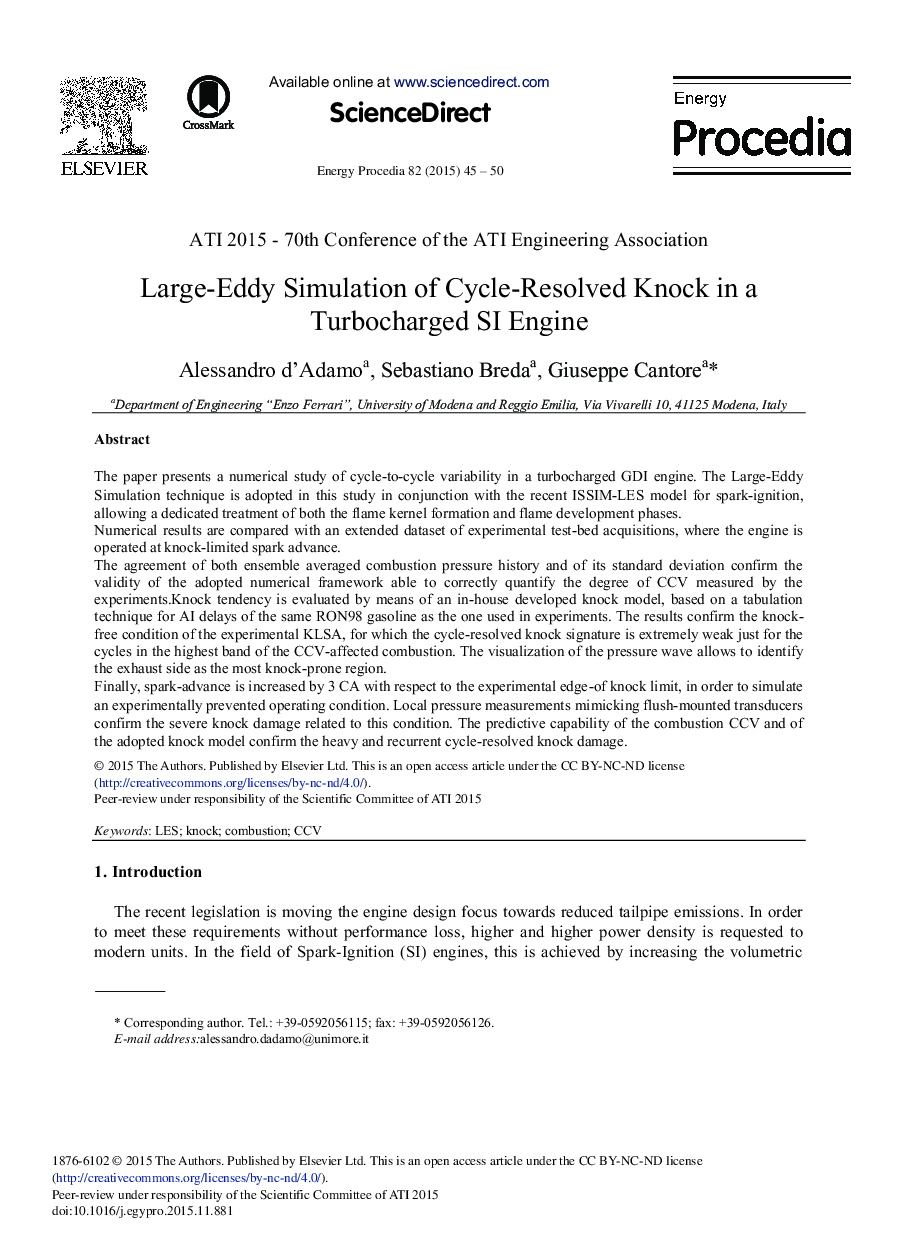| Article ID | Journal | Published Year | Pages | File Type |
|---|---|---|---|---|
| 1509037 | Energy Procedia | 2015 | 6 Pages |
The paper presents a numerical study of cycle-to-cycle variability in a turbocharged GDI engine. The Large-Eddy Simulation technique is adopted in this study in conjunction with the recent ISSIM-LES model for spark-ignition, allowing a dedicated treatment of both the flame kernel formation and flame development phases.Numerical results are compared with an extended dataset of experimental test-bed acquisitions, where the engine is operated at knock-limited spark advance.The agreement of both ensemble averaged combustion pressure history and of its standard deviation confirm the validity of the adopted numerical framework able to correctly quantify the degree of CCV measured by the experiments.Knock tendency is evaluated by means of an in-house developed knock model, based on a tabulation technique for AI delays of the same RON98 gasoline as the one used in experiments. The results confirm the knock-free condition of the experimental KLSA, for which the cycle-resolved knock signature is extremely weak just for the cycles in the highest band of the CCV-affected combustion. The visualization of the pressure wave allows to identify the exhaust side as the most knock-prone region.Finally, spark-advance is increased by 3 CA with respect to the experimental edge-of knock limit, in order to simulate an experimentally prevented operating condition. Local pressure measurements mimicking flush-mounted transducers confirm the severe knock damage related to this condition. The predictive capability of the combustion CCV and of the adopted knock model confirm the heavy and recurrent cycle-resolved knock damage.
